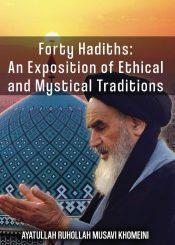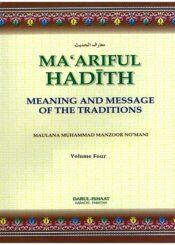Historical Books of Shi'ites in Kalam, Hadith and Rijal
Historical Books of Shi'ites in Kalam, Hadith and Rijal
0 Vote
342 View
By: Rasul Ja 'fariyan Kalami-Historical Books Part of the Shi‘ite kal?m? works have extended the discussion to history in proportion with its importance to the issue of Imamate. The discussions on the Imamate could generally be divided into two sections. A rational discussion to prove the necessity for the existence of the Imam, and a historical discussion to prove existence of divine designation (nass) and the reason for lack of attention to nass by others as well as criticism of the actions of certain companions of the Prophet in this regard. The historical part of these works mainly contains strong criticism of the caliphate and the caliphs, a subject that is referred to as mat?‘in. The noteworthy point in this regard is that some of these works are kal?m?-historical and some are historical-kal?m?, the latter being presented mainly in the framework of had?th. An example of the extant works that have been published is the book al-Istigh?thah f? Bida‘ al-Thal?thah by Ab? al-Q?sim al-Kuf? who is accused of exaggeration. Another is a book written by Sulaym bin al-Qays, which apart from ambiguities with regard to certain narrations, is an early text on the historical defense of the kal?m? beliefs of the Shi‘ites within the framework of had?th on the issue of Imamate. Mas‘udi’s Ithb?t al-Wasiyyah, which should definitely be attributed to someone besides the author of Muruj al-Dhahab could also be placed among the had?th?-historical-kal?m? works. Among the earliest such works is the brief book al-Muqni‘ f? al-Im?mah by al-Sud?b?d? (belonging to the village of Sud?b?d near Rayy) published by Intish?r?t-i Isl?m?, Qum. A famous work of this kind is Kit?b al-Sh?f? of Sayyid Murtaz? which has been published. Shaykh Tus? wrote a new edition of his teacher’s book under the title Talkh?s al-Sh?f?, which has also been published. Several works of Shaykh Muf?d also contain numerous historical issues especially concerning the had?th al-Ghad?r and the meaning of wil?yah and related words spoken by the Prophet on the occasion. Shaykh Muf?d’s al-Jamal should be considered a historical- kal?m? work rather than a kal?m?-historical one. This book is part of the purely historical works written by the Shi‘ites during the 4th century AH. They form part of the historiographical works concerning a single specific event written by the Shi‘ites of Iraq to record subjects in view. The historical nature of this work cannot be disputed. In fact that Shaykh Muf?d has used his knowledge of history as an instrument to prove the viewpoints of the Shi‘ites in his debates with the ‘Uthm?nis and Mu‘tazalites, and thus made pioneering efforts in combining the school of history with the science of kal?m. Books that have been written on the history of the Shi‘ites contain kal?m?-historical discussions. Two works that are quite similar to each other in this regard are Firaq al-Shi?‘ah by Nowbakhti and al-Maq?l?t wa al-Firaq by Sa‘ad bin ‘Abdull?h al-Ash‘ar?. These two works contain valuable information on Shi‘ite history. The book al-Ihtij?j by Tabris? could be placed in the same category. It is a work, which in addition to the debates and argumentations, provides valuable accounts of the life of the Imams (‘a). The book al-Tar?’if f? Ma‘rifah Maz?hib al-Taw?’if also contains historical information and had?th in criticism of the rival sects. Had?th?-Historical Books Undoubtedly had?th and history are closely intertwined in Islam. Some times more emphasis has been laid on history and at other times more on had?th. Many historical issues are found in the book al-k?f?. Among the Shi‘ite had?th? works of the 3rd and 4th centuries AH, as is the case with Sunni books of had?th, plenty of historical material is found. In al-k?f?, the section dedicated to discussion of the Imamate, also includes historical issues about the lives of the Imams’ (‘a). Unfortunately, no other early Shi‘ite book like al-k?f? has remained extant to throw more light on such issues. Perhaps one can point to Bas?’ir al-Daraj?t which contains some historical material. The most outstanding work concerning the life of Imam Riz? (‘a) is Shaykh Saduq’s masterpiece ‘Uyun Akhb?r al-Riz?. The life of the 8th Imam (‘a) and the situation of the Shi‘ites of that period has been fully reflected in this book. Saduq’s other works also contain more or less historical ah?d?th. His book ‘Ilal al-Shar?’i‘ is among the most outstanding in this regard. One can also find similar narrations in Saduq’s Am?l?. Since Saduq lived at a time when the great literary current for compiling voluminous books was about to start, and used in his books most of the early heritage of the Shi‘ites – part of which was on the point of being lost forever to posterity – his works are considered quite valuable from an historical point of view. Three valuable books remain with regard to the ghaybah (occultation) of Imam Mahd? (‘a), each of which reflects an important part of the Shi‘ite history during the third century. The books Kam?l al-D?n by Saduq, al-Ghaybah by Shaykh Tus? and al-Ghaybah by Nu‘m?n? are the most important works in this connection. Shi‘ite history in this period is based on these few works since many other similar works are not extant today. Two examples are the works of the third century scholar Muhammad bin Bahr Rahn?, part of which is mentioned in Kam?l al-D?n. Among the hadith corpus, mention should be made of the man?qib books. Such works also constitute a kind of historiography. Among the earliest books in this regard is Man?qib al-Imam Am?r al- Mu’min?n (‘a) by Muhammad bin Sulaym?n Q?z? al-Kuf? who lived in the third century.[1] This book is full of historical information on the characteristics of Prophet Muhammad (S) and the life of Am?r al-Mu’min?n (‘a). Despite the fact that its compiler is a Zaydi Shi‘ite the book contains many narrations from Imam B?qir (‘a). Like the above mentioned work, among the Ism?‘il? Shi‘ites one can point to the valuable book Sharh al-Akhb?r by Q?z? Nu‘m?n bin Muhammad Tam?m? Maghrib? (d. 363) who compiled many books and was the most outstanding Ism?‘?l? scholar during the Fatimid rule in Egypt and North Africa. This book which has recently been published[2] deals with the merits of the Prophet’s Ahl al-Bayt (‘a) and is also very rich in historical information. For example the first, second and third sections describe Imam ‘Al?’s (‘a) merits in the words of Prophet Muhammad (S), his companionship of the Prophet and his participation in the Battles of Badr, Uhud, Khandaq and other expeditions. The fourth section of the book is on the Battle of Jamal and the War of Siffin. The fifth section is continuation of the narrations on Siffin. The sixth section deals with the filthy characteristics of the enemies of Imam ‘Al? (‘a) especially Mu‘?wiyah and his killing of Hujr bin ‘Ad?. The seventh to tenth sections describe the virtues of Am?r al-Mu’min?n (‘a). The eleventh section is the continuation of the merits of the Ahl al-Bayt, especially Hadhrat F?timah (‘a). The twelfth section discusses the merits of Imam Hasan (‘a), his life and the martyrdom of Imam Husayn (‘a). The thirteenth section is continuation of the sufferings of the Ahl al-Bayt (‘a) and also talks about other outstanding members of the Ban? H?shim such as Ja‘far ibn Ab? T?lib and other descendants of the Prophet’s grandfather ‘Abd al-Mutallib. This section also focuses on the merits of Imam Zayn al-Abidin (‘a) and Imam Muhammad B?qir (‘a). The fourteenth section is on Imam S?diq (‘a), the history of Shi‘ite sects till the time of Mu‘tazid al-‘Abb?s?, and the appearance of the Fatimid Mahd?. The fifteenth section is one the characteristics of the promised Mahd? and the sixteenth and last section on the characteristics of the Shi‘ites. Although it has distinctive Ism?‘il? tendencies, the book is a valuable, comprehensive and accredited work on the history of the Ahl al Bayt (‘a), and in view of its antiquity it is considered unique within its own time frame. If we take into account that Q?z? Nu‘m?n has relied on al-Tabar?’s lost work al-Wil?yah for the event of Ghad?r, then we will come to know the importance of this work and its contents in view of the books and treatises that were available to him and which are not extant today, although, unfortunately, he does not always mention the sources of his quotations. al-‘Umdah by Ibn Bitr?q is also considered among these works. Rij?l?-Historical Books The Science of rij?l is one of the important branches of Islamic history. The Shi‘ites have given much attention to this particular field by meticulously recording the names of the companions of the Prophet and the Imams (‘a), as well as the chains of narrations. Although most of the early Shi‘ite works of rij?l have not survived, the most important of the extant works is the book al-Ikhtiy?r Ma‘irfah al-Rij?l or Rij?l al-Kashsh? as it is also known. It should be considered important from every aspect. Another important work is Rij?l al-Naj?sh?, which apart from its rij?l? details, is a mine of information on Shi‘ite books of the early centuries of Islam as well as Shi‘ite cultural history. During the later eras, such works were not compiled as much as before, but every work compiled in this regard is important from the historical point of view. Among them are such books as al-Fihrist and al-Rij?l by Shaykh Tus? and also the al-Rij?l by ‘All?mah Hilli. The valuable book al-Fihrist by Ibn Nad?m should also be considered a fully Shi‘ite work, something that has been duly proved. Ibn Ab? Tayy, the Shi‘ite scholar of the seventh century AH (d. 630) wrote a book entitled Tabaqat al-Im?miyyah which has unfortunately been lost. Ibn Hajar ‘Asqal?n? has quoted from it in his al-Is?bah on Yaghus Sah?b?. Ibn Ab? Tayy also wrote a history which was in chronological order. This work has also been given up for lost. A few quotations from it are found in Safd?’s Nukat al-Hamiy?n on prominent blind figures.[3] We should not overlook the books of ansab or geneology which are also in a way related to history. This science was prevalent among the Shi‘ite and two of the earliest books in this field are al-Mujd? and Sirr al-Silsilah. This branch in the history of the Ahl al-Bayt (‘a) cannot be overlooked. A list of the scholars related to the late Ayatull?h Sayyid Shih?b al-D?n Mar‘ash? Najaf? has been mentioned in the introduction to Lub?b al-Ans?b. In addition to elaborating on the geneologies these books also mention historical issues. During the Safawid and Qajarid eras several encyclopaedic rij?l? works such as Riy?z al-‘Ulam?’ and Rawz?t al-Jann?t were written, giving us more detailed historical information especially in the field of the history of culture. Notes: [1] Refer to T?r?kh al-Tur?th al-‘Arab?, al-Tadw?n al-T?r?kh?, pp. 208, 209. This book has been researched by ‘All?mah Muhammad B?qir Mahmud? and published in three volumes by Majma‘ al-Ihy?’ al- Thiq?fah al-Islamiyyah. [2] This book has been published in both Lebanon and Iran. D?r al-Thaqalayn Publishers, Beirut; The Intish?r?t-e Islamiyyah edition has been researched by Sayyid Muhammad Husayn? Jal?l?. [3] Refer to al-Dhar?‘ah, vol. 3, page 219. Source: alhassanain.com






